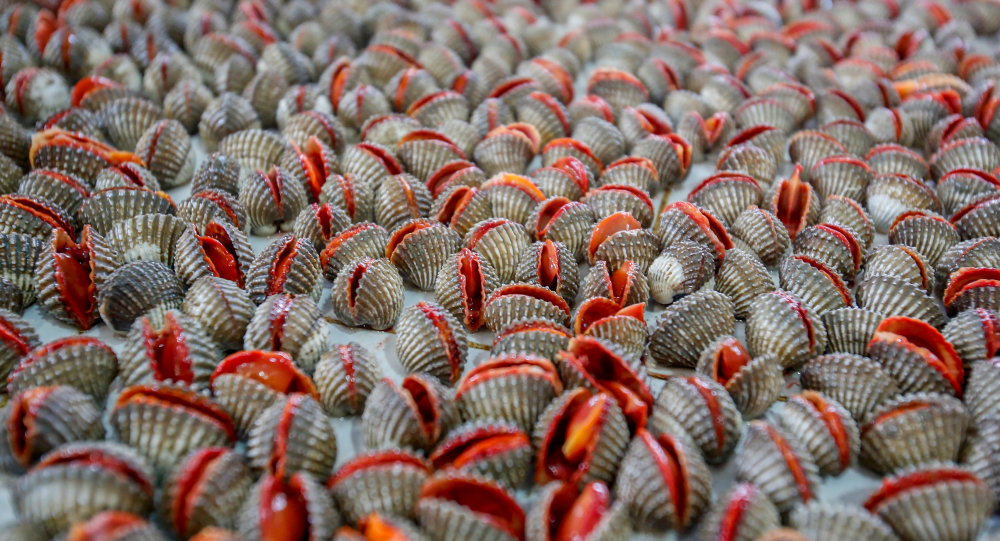Meet the blood clam, also known as blood cockles. Hailing from the shellfish family Arcidae, they’re so named for their dramatic coloration. The blood-red is really just that, blood, but you would do well to take it as a bit of a warning.
Eating blood clams is considered one of life’s more dangerous delicacies because of the significant risk they’re packing something other than their curiously red blood. Like other shellfish they can contain harmful toxins, bacteria, and viruses, including hepatitis A.
What are blood clams?
Blood clams are species of ark clams found across the world, but they are heavily cultivated in Southeast Asia where they’re considered something of a delicacy. Traditionally, blood clams are eaten raw and have been compared in flavor to geoducks, the ocean’s bizarre giant burrowing clam.
Why are blood clams red?
The blood-red coloration of these curious clams comes from hemoglobin, the same protein that makes our blood red. Most clams don’t look like this because they don’t have hemoglobin, but blood clams are packed full of it, giving them a rather spooky but undeniably eye-catching appearance.

Consuming blood clams can carry a risk of hepatitis A.
Image credit: adriefoto / Shutterstock.com
Why are blood clams dangerous?
If you live outside of Asia and this is the first time you’re seeing blood clams, that could come down to the fact that importing them has been banned across much of the globe due to health concerns. According to the New York Times, shipments have even been seized by governments in some parts of the globe, demonstrating how seriously some people take the risks of blood clams.
Like other bivalves, blood clams are filter feeders, and with great sieving comes great risk. This is because if a shellfish is living in contaminated waters, they become the perfect little vessel for accumulating pathogens.
This is, of course, true of other such delicacies. After all, who doesn’t know someone who’s fallen foul of a nasty oyster? But there is generally stricter regulation around where oysters are grown and harvested, making the risk of viruses like hepatitis A slightly lower. However, that’s not to say that hepatitis A is always present in blood clams, and in some areas it’s thought treating them for contaminants can make them safer.
Hepatitis A spreads through feces so can wind up in waters contaminated with human and animal waste, and outbreaks of the illness have been connected to the consumption of clams. There’s no way of knowing just by looking at the blood-red pulp of a raw blood clam if it’s contaminated, and if you eat it, you could develop serious illness.
Perhaps the blood clam is better left as food for the eyes.
Source Link: Blood Clams: The Dangerous Delicacy You Can't Take Your Eyes Off